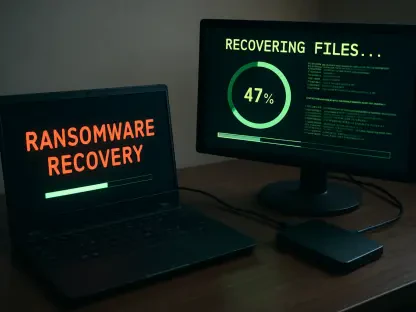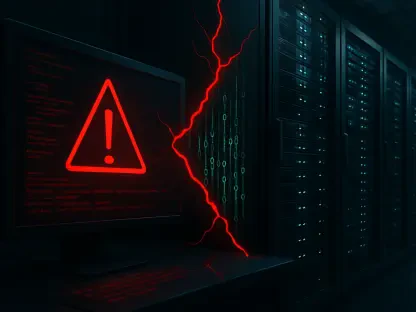The security industry is on the brink of a significant transformation, driven by the rapid advancements in artificial intelligence (AI) and cloud technologies. As we approach 2025, these innovations promise to revolutionize how security is managed, offering new opportunities and presenting unique challenges. This article delves into the potential impact of AI and cloud technologies on the security landscape, exploring the growth opportunities, transformative technologies, and the hurdles that lie ahead.
Growth Opportunities in AI and Cloud Technologies
The integration of AI and cloud technologies in the security industry is creating substantial growth opportunities. One of the most promising areas is interactive video combined with audio, particularly in remote guarding solutions. These advancements are enabling a shift from reactive to proactive crime prevention, significantly enhancing monitoring efficiency and reducing false alarms.
AI-driven video analytics are at the forefront of this transformation. By leveraging machine learning algorithms, security systems can now identify potential threats in real-time, allowing for immediate intervention. This proactive approach not only improves security outcomes but also opens up new revenue streams for security dealers and integrators.
Cloud migration is another critical factor driving growth. The flexibility, scalability, and cost advantages of cloud-based solutions have facilitated their widespread adoption. Security providers can now offer more robust and scalable services, catering to a broader range of clients and needs. The cloud also supports the integration of AI, further enhancing the capabilities of security systems.
These advancements extend beyond simple enhancements to existing systems; they are creating entirely new opportunities for the industry. Remote monitoring, for example, is becoming increasingly sophisticated, allowing for better resource allocation and more effective security strategies. With the combined power of AI and the cloud, security providers can offer more comprehensive security solutions, ranging from real-time threat detection to predictive analytics that anticipate future risks. This shift towards a more proactive approach not only helps in crime prevention but also significantly reduces operational costs and increases efficiency.
Transformative Technologies Shaping the Future
Several transformative technologies are set to reshape the security industry by 2025. Among these, AI and machine learning stand out for their potential to revolutionize crime prevention strategies. However, it is essential to approach these technologies with caution, as overhyped expectations can lead to disappointment. AI should be viewed as a powerful tool that requires proper expertise for optimal application.
The cloud is another game-changer, offering a foundational platform that supports various innovations. Its ability to provide scalable and cost-efficient solutions makes it an attractive option for security providers. The rise of Software as a Service (SaaS) models is a testament to the cloud’s impact, enabling providers to offer more flexible and accessible security solutions.
Remote video monitoring and guarding are also gaining traction, driven by technological maturity and the need for more effective security measures. These solutions offer a cost-effective alternative to traditional human guards, providing high recurring monthly revenue (RMR) opportunities for security dealers and integrators.
While the integration of AI and cloud technologies is promising, it is important to recognize the challenges that come with their implementation. Ensuring that AI systems are properly trained and capable of delivering accurate results is crucial to avoid false positives and negatives. Moreover, the reliance on cloud-based solutions necessitates robust cybersecurity measures to protect sensitive data from potential breaches. By addressing these challenges head-on and investing in the necessary expertise and infrastructure, the security industry can fully realize the transformative potential of these technologies.
Challenges in the Security Industry
Despite the promising advancements, the security industry faces several challenges. One of the most pressing issues is talent acquisition. Finding skilled professionals in installation, service, and sales roles has been difficult due to the industry’s low profile and the antiquation of legacy systems. Attracting young talent is crucial for the industry’s growth, and efforts from industry associations to promote career opportunities are essential.
Keeping pace with rapid technological advancements is another significant challenge. Security providers must adopt new technologies and educate end users to meet contemporary security needs effectively. This requires a willingness to evolve from traditional, reactive systems to proactive, real-time crime prevention solutions. The industry’s ability to keep up with these changes will determine its success in the coming years, as the demand for advanced security solutions continues to grow.
Cybersecurity is also a critical concern. As the industry becomes increasingly reliant on networked technologies, robust cybersecurity measures are paramount. Securing devices and platforms against cyber threats is essential to maintain trust and effectiveness in security solutions. The potential for cyberattacks on security systems poses a significant risk, and providers must prioritize the development and implementation of strong security protocols to mitigate these threats.
In addition to these challenges, the security industry must also navigate the complexities of integrating new technologies with existing systems. This requires a careful balance of innovation and practicality, ensuring that new solutions are compatible with legacy infrastructure while delivering improved performance. By addressing these challenges and staying ahead of technological trends, the security industry can overcome these obstacles and continue to evolve in a rapidly changing landscape.
Industry Evolution and Best Practices
The security industry must evolve to stay relevant in a rapidly changing technological landscape. Providers need to transition from traditional, reactive systems to proactive, real-time crime prevention solutions. This evolution requires a closer partnership with law enforcement to improve public safety through advanced technologies.
Security providers should focus on their core competencies while seeking strategic partnerships to extend their offerings. Collaborations with reputable remote guarding providers, for instance, can help dealers and integrators offer advanced crime prevention solutions without the impracticality of developing in-house capabilities. By leveraging the expertise and resources of specialized partners, security providers can enhance their service offerings and better meet the needs of their clients.
Adopting new technologies and educating end users are also crucial for the industry’s evolution. Providers must remain aware and adaptive to technological advancements and market demands to stay competitive and meet modern security needs effectively. This involves not only staying up-to-date with the latest innovations but also investing in ongoing training and development for employees to ensure they are equipped to handle the evolving landscape.
Implementing best practices in technology adoption and user education can help security providers navigate the complexities of integrating new solutions. This includes establishing clear guidelines for the implementation and use of new technologies, as well as providing comprehensive training programs for both employees and clients. By fostering a culture of continuous learning and adaptation, the security industry can maintain its competitive edge and deliver more effective and efficient security solutions.
Trends and Consensus Viewpoints
The rise of remote video monitoring and guarding is a significant trend expected to become mainstream by 2025. This shift is driven by technological maturity and the ability to offer more effective, efficient, and cost-effective security solutions compared to traditional human guards. The potential for high recurring monthly revenue (RMR) makes it an appealing avenue for security dealers and integrators. As remote monitoring technology continues to evolve, it is likely to become an integral part of the security landscape, offering enhanced capabilities and improved outcomes for clients.
Cloud adoption and SaaS models are also on the rise. The cloud acts as a foundational platform that supports various innovations, including AI and machine learning. This adoption promotes scalable and cost-efficient security solutions, fostering the rise of Software as a Service (SaaS) topologies which are anticipated to dominate the industry landscape. The flexibility and scalability of cloud-based solutions make them an attractive option for security providers, enabling them to offer more comprehensive and adaptable services to their clients.
While AI and machine learning hold transformative potential, it is essential to approach these technologies with caution. The complexity and overhype surrounding AI can lead to unrealistic expectations. AI should be viewed as an additional tool that enhances security solutions when properly applied, rather than a silver bullet. Proper implementation and expertise are crucial to ensuring that AI delivers on its promises and contributes to the overall effectiveness of security systems.
By focusing on these emerging trends and adopting best practices in technology integration, the security industry can continue to evolve and thrive in a rapidly changing landscape. The key to success lies in staying informed about technological advancements, investing in ongoing education and training, and fostering strategic partnerships that enhance service offerings and capabilities.
Pressing Issues and Strategic Recommendations
Strengthening partnerships with law enforcement is crucial for the security industry to maximize the potential of AI and cloud technologies. By working collaboratively, private security providers and law enforcement agencies can develop and implement advanced crime prevention strategies that leverage the latest technological innovations. These partnerships can help bridge the gap between traditional and modern security approaches, ensuring that new solutions are both effective and practical.
Mission focus and strategic partnerships are also essential for security providers looking to adapt to the changing landscape. By concentrating on their core competencies and seeking out collaborations that complement their strengths, security providers can offer more comprehensive and effective solutions to their clients. For example, partnering with specialized remote guarding providers can enable security dealers and integrators to deliver advanced crime prevention solutions without the need for extensive in-house development.
Furthermore, addressing pressing issues such as talent acquisition and technological adaptation is critical for the industry’s continued growth and success. Attracting skilled professionals and investing in ongoing training and development programs can help bridge the talent gap and ensure that security providers have the expertise needed to navigate the complexities of new technologies. By staying ahead of technological trends and fostering a culture of continuous learning, the security industry can overcome these challenges and continue to thrive in the years to come.
Conclusion: 2025 Industry Outlook
The security industry is on the verge of a major transformation, fueled by rapid advancements in artificial intelligence (AI) and cloud technologies. As we near 2025, these innovations are set to revolutionize security management, providing new opportunities and posing unique challenges. AI’s ability to process large amounts of data quickly and accurately can enhance threat detection and response, making security systems more efficient and reliable. Cloud technologies offer scalable and cost-effective solutions, enabling organizations to manage security measures remotely and with greater flexibility. However, the integration of AI and cloud technologies also comes with hurdles, such as ensuring data privacy, dealing with sophisticated cyber threats, and managing the complexity of new systems. This article delves into the potential impact of AI and cloud technologies on the security landscape, examining the growth prospects, transformative advancements, and obstacles that lie ahead. As the industry evolves, it is crucial for security professionals to stay informed and adapt to these emerging technologies to safeguard the future effectively.









